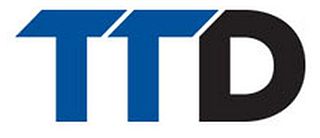
The Interstate Commerce Commission (ICC) was a regulatory agency in the United States created by the Interstate Commerce Act of 1887. The agency's original purpose was to regulate railroads to ensure fair rates, to eliminate rate discrimination, and to regulate other aspects of common carriers, including interstate bus lines and telephone companies. Congress expanded ICC authority to regulate other modes of commerce beginning in 1906. Throughout the 20th century, several of ICC's authorities were transferred to other federal agencies. The ICC was abolished in 1995, and its remaining functions were transferred to the Surface Transportation Board.
The Elkins Act is a 1903 United States federal law that amended the Interstate Commerce Act of 1887. The Act authorized the Interstate Commerce Commission (ICC) to impose heavy fines on railroads that offered rebates, and upon the shippers that accepted these rebates. The railroad companies were not permitted to offer rebates. Railroad corporations, their officers, and their employees, were all made liable for discriminatory practices.

The United States Department of Transportation is one of the executive departments of the U.S. federal government. It is headed by the secretary of transportation, who reports directly to the president of the United States and is a member of the president's Cabinet.

The Airline Deregulation Act is a 1978 United States federal law that deregulated the airline industry in the United States, removing federal control over such areas as fares, routes, and market entry of new airlines. The act gradually phased out and disbanded the Civil Aeronautics Board, but the regulatory powers of the Federal Aviation Administration (FAA) were not diminished over all aspects of aviation safety.

The Staggers Rail Act of 1980 is a United States federal law that deregulated the American railroad industry to a significant extent, and it replaced the regulatory structure that had existed since the Interstate Commerce Act of 1887.

Deregulation is the process of removing or reducing state regulations, typically in the economic sphere. It is the repeal of governmental regulation of the economy. It became common in advanced industrial economies in the 1970s and 1980s, as a result of new trends in economic thinking about the inefficiencies of government regulation, and the risk that regulatory agencies would be controlled by the regulated industry to its benefit, and thereby hurt consumers and the wider economy. Economic regulations were promoted during the Gilded Age, in which progressive reforms were claimed as necessary to limit externalities like corporate abuse, unsafe child labor, monopolization, pollution, and to mitigate boom and bust cycles. Around the late 1970s, such reforms were deemed burdensome on economic growth and many politicians espousing neoliberalism started promoting deregulation.

The Penn Central Transportation Company, commonly abbreviated to Penn Central, was an American class I railroad that operated from 1968 to 1976. Penn Central combined three traditional corporate rivals, all united by large-scale service into the New York metropolitan area and New England and Chicago. The new company failed barely two years after formation, the largest bankruptcy in U.S. history at the time. The Penn Central's railroad assets were nationalized into Conrail along with the other bankrupt northeastern roads; its real estate and insurance holdings successfully reorganized into American Premier Underwriters.

The Northeast Corridor (NEC) is an electrified railroad line in the Northeast megalopolis of the United States. Owned primarily by Amtrak, it runs from Boston in the north to Washington, D.C. in the south, with major stops in Providence, New Haven, Stamford, New York City, Trenton, Philadelphia, Wilmington, and Baltimore. The NEC closely parallels Interstate 95 for most of its length, and, as of 2013, is the busiest passenger rail line in the United States both by ridership and by service frequency. The NEC carries more than 2,200 trains daily.

Wooden railroads, called wagonways, were built in the United States starting from the 1720s. A railroad was reportedly used in the construction of the French fortress at Louisburg, Nova Scotia, in New France in 1720. Between 1762 and 1764, at the close of the French and Indian War (1756–1763), a gravity railroad called Montresor's Tramway was built by British military engineers up the steep riverside terrain near the Niagara River waterfall's escarpment at the Niagara Portage in Lewiston, New York.

The Surface Transportation Board (STB) of the United States is an independent federal agency that serves as an adjudicatory board. The board was created in 1996 following the abolition of the Interstate Commerce Commission (ICC), and absorbed regulatory powers relevant to the railroad industry previously under the ICC's purview.

Conrail, formally the Consolidated Rail Corporation, was the primary Class I railroad in the Northeastern United States between 1976 and 1999. The trade name Conrail is a portmanteau based on the company's legal name. It continues to do business as an asset management and network services provider in three Shared Assets Areas that were excluded from the division of its operations during its acquisition by CSX Corporation and the Norfolk Southern Railway.

Harley Orrin Staggers Sr. was an American politician who served 16 terms in the United States House of Representatives from 1949 to 1981, representing West Virginia's 2nd Congressional District as a Democrat. From 1966 until his retirement in 1981, Congressman Staggers chaired the powerful House Committee on Interstate and Foreign Commerce. A longtime supporter of the American railroad industry and its workers, Congressman Staggers' landmark legislative achievement was the Staggers Rail Act, passed in 1980.

Rail transportation in the United States consists primarily of freight shipments along a well integrated network of standard gauge private freight railroads that also extend into Canada and Mexico. The United States has the largest rail transport network size of any country in the world, at a total of approximately 160,000 miles (260,000 km).

The Interstate Commerce Act of 1887 is a United States federal law that was designed to regulate the railroad industry, particularly its monopolistic practices. The Act required that railroad rates be "reasonable and just," but did not empower the government to fix specific rates. It also required that railroads publicize shipping rates and prohibited short haul or long haul fare discrimination, a form of price discrimination against smaller markets, particularly farmers in Western or Southern Territory compared to the Official Eastern states. The Act created a federal regulatory agency, the Interstate Commerce Commission (ICC), which it charged with monitoring railroads to ensure that they complied with the new regulations.
A public service company is a corporation or other non-governmental business entity which delivers public services - certain services considered essential to the public interest. The ranks of such companies include public utility companies like natural gas, pipeline, electricity, and water supply companies, sewer companies, telephone companies and telegraph companies. They also include public services such as transportation of passengers or property as a common carrier, such as airlines, railroads, trucking, bus, and taxicab companies.
The United States Railway Association (USRA) was a government-owned corporation created by United States federal law that oversaw the creation of Conrail, a railroad corporation that would acquire and operate bankrupt and other failing freight railroads. USRA operated from 1974 to 1986.
The Motor Carrier Regulatory Reform and Modernization Act, more commonly known as the Motor Carrier Act of 1980 (MCA) is a United States federal law which deregulated the trucking industry.
The Surface Freight Forwarder Deregulation Act of 1986, Public Law 99-521, is a federal law of the United States which eliminated federal regulation of prices, services and entry as to general commodities surface 'freight forwarders' This Act was a follow on to a sweeping program to free up competitive forces in United States transportation, most but not all of which was accomplished in the 1971-1980 period, as set out in the deregulation topic in this encyclopedia.

The Transportation Trades Department, AFL–CIO (TTD) is a constitutionally mandated department of the AFL–CIO. It was founded in February 1990 to provide AFL–CIO-affiliated unions whose members work in the transportation industry or who build transportation infrastructure a unified policy-making voice on transportation issues. TTD has 37 member unions as of October 2022.
Transportation in the United States is governed by laws and regulations of the federal government. The Department of Transportation is responsible for carrying out federal transportation policy, and the Department of Homeland Security is responsible for security in transportation.











